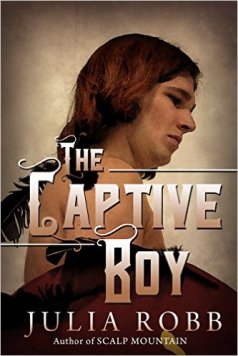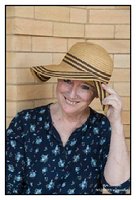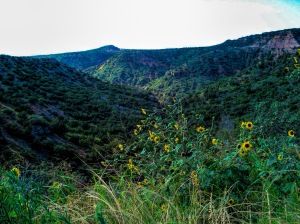By Julia Robb
Friends, I want to welcome author friend, Julia Robb. Her newest release is, The Captive Boy which is the topic of this interview. I hope that after hearing what she has to say you consider purchasing this compelling read.

Cover art – The Captive BoyJulia spent 20 years as an award winning journalist before becoming a novelist. Since July 2012 she has published four 5-Star rated books on Amazon.com all set in West Texas. This interview covers The Captive Boy, her newest book, released on December 17th. The print version will be published next week.
Question: Julia, I’ve enjoyed reading your three previous western novels but found The Captive Boy exceptional. Why did you write this story?
First, I wanted to show readers that America’s frontier army was heroic, our troops served their country with courage and honor and did their best in a hard time and a hard place. They were tough. We have reason to be proud of them. I wish more Americans knew that.
Also, I wanted to write a story showing readers what happened to white captive kids. After they were recovered, they were emotionally unstable people who couldn’t maintain jobs or relationships. They didn’t feel at home in the white culture, the free-wheeling Indian culture was gone (living on the reservation was not like living with a nomadic tribe). Those kids were sad and never again found a real home. I was, and am, sad for them.
Question: Tell my readers about your protagonist, Mac McKenna. I think he’s a compelling character and a respected leader by those who served under him. Is he based on a historic character?
Yes, Mac is based on Col. (later General) Ranald Mackenzie. Mackenzie was a hero, and he is my hero. He got the job done. He never gave up. He beat the Comanches. He didn’t want to kill, but he did his duty. I also see him as having been a lonely, isolated man who wanted to love and be loved but he never got the chance. I gave Mac many of these traits, including, kind of, Mackenzie’s fate. But Mac’s fate is a metaphor for what happened to Mackenzie.
I felt Mac on a deeper level than my other protagonists. He was inside me. I love him, which is natural, I guess, as I am the only person in the world who thoroughly understands him.
Also, I want to add, I have some of Mackenzie’s letters, written while he was commander at Fort Sill (the army fort and the Comanche and Kiowa reservation), and those letters prove Mackenzie was a humane and wise administrator. So, naturally I can tell you my Mac was both humane and wise, both as administrator and soldier.
Question: Tell us about the title character, August Shiltz. I suspect his definition of captive would be quite different from Mac’s definition.
Yes, August didn’t see himself as a captive until he was retaken by Mac’s troops. He was brainwashed. After all, his Indian parents were the only ones he could remember. It’s like being dropped on Mars and adopted by the natives. The trauma destroys previous memories.
I checked with a psychologist to find out what this kind of trauma would do to people, and then I used what the psychologist said. They have Post-Traumatic Stress Syndrome.
But August did understand after…oops, almost had to add a spoiler alert.
Question: Julia, you used a writing style that made the events leap off the page for me. Your scenes were like reading from a current news story; like an anthology or journal. Would you care to comment on this choice, maybe set the reader’s expectation?
I just came to it by happenchance, by fooling around. In some ways, writing a novel is like growing a garden; you water the plants, you weed, you introduce new plants. One thing leads to another. Then before you know it, it’s harvest time.
Question: The Captive Boy must have taken an enormous amount of research. Would you like to give us some background on that process? It seems to have been based in large measure on historical events.
I read everything I could find about Mackenzie and his troops, about the Red River War, about the frontier cavalry, about the country and its terrain, about Comanches, about white captives, and I’d been doing this for years before I started formal research. I had compiled a 100-page research book before writing one word.
Almost everything in the novel, as regarding events, really happened. I changed some things for novelistic purposes, but not much.
Do you remember the scene where the Comanches attacked soldiers in the night and the horses panicked and went so wild they pulled the stakes (holding them) from the ground? The stakes then went flying through the air. That made those stakes lethal weapons. That really happened.
Of course, the scenes between characters only happened in my head. Except for the scene with Gen. Sherman, when Mac and Sherman found out the Comanches had destroyed a teamster train and killed most of the teamsters.
Question: We’ve touched on your main characters. Do you have anything to share about the supporting cast of characters?
I loved all of them so much, and I miss them. I loved Eliza who told her friend Jane about everything she saw and heard in Col. McKenna’s quarters, I loved Asha, August’ eventual wife and Asha’s relationship with Mac. I loved it that Mac loved August and he also desired his wife (that’s quite a three-cornered dilemma, isn’t it)?
I loved Sgt. Major Pruitt, who told tall stories and loved baseball and loved his baseball team, I loved Sam Brennan, Mac’s adjutant, who was a brilliant anthropologist and naturalist, actually a kind of Leonardo De Vinci.
Sam was based on a real soldier, John Bourke, author of “On the Border With Crook,” the all-time best frontier memoir.
Question: What would you like to share about the time and place; the landscape where The Captive Boy took place?
Tough country. The Southern Great Plains are not flat but rolling and covered with thorny plants so sharp they can cut your arteries open. Very little good water. The canyon country (as you know Richard) drops from level ground. First, you’re riding on level land and then the bottom just drops 1,000 feet.
Men went blind from riding in the sun day after day, and died of heat stroke, and dysentery (from drinking contaminated water), and snakebite, and, of course, war wounds.
The Comanche often used barbed arrows (which were nearly two feet long) and you couldn’t just pull them out. They had to be cut out. Not good. Wounded men often died from infection, and even lockjaw.
Question: This book is somewhat different from your western novels. Would you like to comment on its genre?
It’s an historical novel. Historical novels are supposed to educate readers on the time and place, and why things were as they were. I hope I’ve done that.
Question: Do you have any additional comments you would like to share, Julia?
Yes, you’re a good guy Richard. Thanks for the interview.
Thank you again, Julia! I appreciate your answers, your efforts to lift up the heroic soldiers, to humanize the Comanche and your dedication to presenting realistic events through fiction. I have found that it’s often easier to present truth through fiction as opposed to biased and alleged fact.
Click here for the Amazon.com link to: The Captive Boy
For my review of The Captive Boy, click here.
For a list of Julia Robb’s biography, other books and purchase links, click here
Short Bio of Julia Robb
I’ma former journalist and editor-I spent 20 years in the newspaper business-
and I’m now a free-lance writer/editor in Marshall,
Texas. For fun, I drive across Texas, to the deserted corners, the wide spaces, heading west past Waco, watching the mesas float in the distance.





What a wonderful interview. A great book by a fantastic author. Thanks, Rich!
Thank you, Steve!
I couldn’t agree more. Julia Robb has written a great book in The Captive Boy and that she’s a fantastic author.
Thank you Steve. Julia Robb hit a homerun with Captive Boy in my opinion.